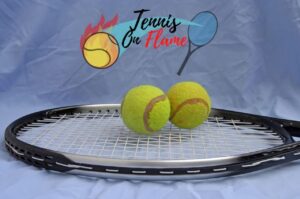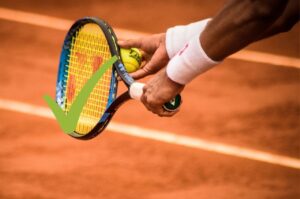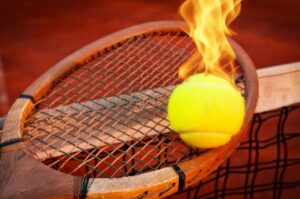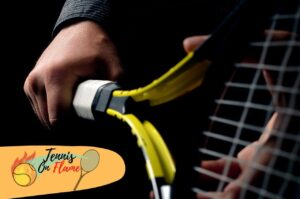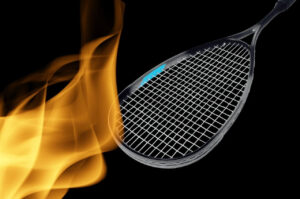In this article we will take a deep look at the origin of the tennis rackets: like where are they made and why?
In tennis, the racket is an essential piece of equipment. It is what players use to hit the ball back and forth across the net.
Rackets are made from a variety of materials, including graphite, aluminum, titanium, and steel.
They can be bought in a variety of shapes and sizes to fit any player’s needs.
But where are tennis rackets made? And why are they made in certain places?
In this article, we will answer those questions and more!
Where are tennis rackets made?
Most tennis rackets are made in China. However, there are a few exceptions. Some high-end rackets are made in other places, like in Japan.
The reason for this is largely economic. Labor costs are much lower in China than they are in the United States or Europe.
That means that companies can produce tennis rackets at a much lower price point, which is advantageous for both consumers and manufacturers.
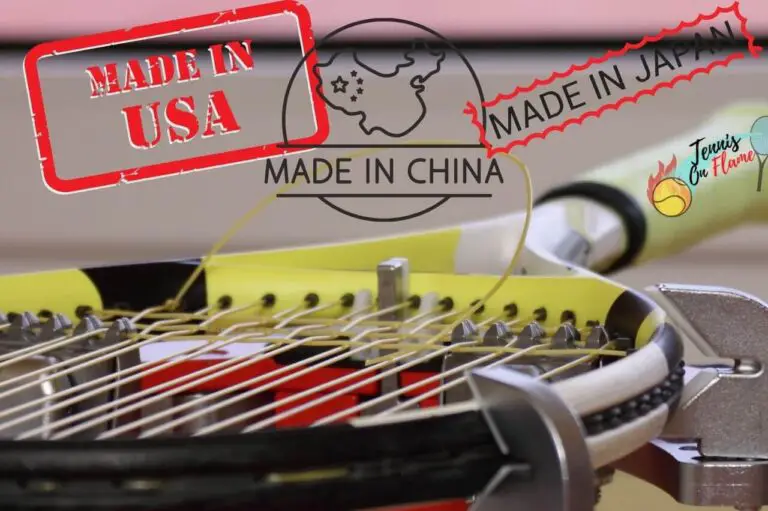
Why are tennis rackets made in China?
As we said, the reason for the majority of tennis rackets being made in China is because of the low labor costs.
But that’s not the only factor at play here. The Chinese manufacturing industry is one of the most advanced and efficient in the world.
That means that companies can produce high-quality goods with lower costs than they could elsewhere.
This is true for both domestic and foreign companies that produce goods in China, so it’s not just about saving money on labor; it’s also about getting high-quality goods at a low price.
Who Makes Tennis Rackets?
There are many brands of tennis rackets on the market, and they are all made by different manufacturers.
Some of the most popular brands include Wilson, Babolat, HEAD, Prince, and Yonex.
These companies all have manufacturing facilities in China.
While there are a few exceptions, the vast majority of tennis rackets are made in China.
The reason for this is largely economic, as labor costs are much lower in China than they are in other countries.
However, the Chinese manufacturing industry is one of the most advanced and efficient in the world, so companies can produce high-quality goods at a low price point.
As a result, the majority of tennis rackets are made in China.
Are all tennis racquets made in China?
No, there are a few exceptions. Yonex, for example, has a manufacturing facility in Japan.
But the vast majority of tennis rackets are made in China.
What is the Tennis racket material evolution?
The materials that tennis rackets are made from have evolved.
Graphite, for example, was first used in tennis rackets in the 1970s.
It quickly became popular because it is a lightweight material that is also strong and durable.
Aluminum was also first used in tennis rackets in the 1970s and is still used today.
It has since been replaced by graphite, which is lighter and more durable.
Titanium was first introduced in the 1980s as an alternative to aluminum, but it did not gain popularity until recently because of its high cost relative to other materials.
Finally, steel was a popular material in the early 1900s but has since been replaced by aluminum.
How long do tennis rackets last?
Tennis racquets are typically made from graphite, which is a lightweight material that can withstand high levels of stress without breaking or cracking.
They are also typically covered with a thin layer of paint to prevent them from rusting when they come into contact with moisture.
This paint layer helps protect the graphite fibers within each racquet from water damage, prolonging its lifespan.
Is it better to buy a tennis racket made in China or Japan?
It’s hard to say whether one country is better than another for manufacturing tennis rackets because there are many factors to consider.
For example, Chinese factories tend to be less expensive than Japanese ones due in part due to lower labor costs; however, they also have a reputation for being more prone to defectively-made products that break easily or don’t perform as promised.
On the other hand, Japanese factories might produce higher-quality products, but they also come with a higher price tag.
Ultimately, it’s up to the individual consumer to decide which country’s tennis rackets they prefer.
What is the tennis racquet structure?
A tennis racquet is typically made up of three parts: the handle, the throat, and the head.
The handle is attached to the throat, which in turn is attached to the head.
The head contains the strings and is responsible for hitting the ball.
The throat connects the handle to the head and also helps to reinforce the racquet’s structure.
Why are tennis rackets so expensive?
Tennis rackets can be quite expensive, especially when compared to other sports equipment like basketballs or soccer balls.
The reason for this is that tennis rackets are made from high-quality materials like graphite and aluminum, which are more expensive than other materials like rubber or plastic.
They also require special manufacturing techniques to ensure they last as long as possible while still being lightweight enough for competitive play.
The result is a product that costs more than most people can afford, but it’s worth every penny because of its durability and performance potential!
How do you make a tennis racket?
It’s a little more complicated than just putting some strings on a piece of wood!
First, the graphite or aluminum frame is cut and shaped to the desired specifications.
Then, the strings are attached to the frame in a specific pattern that will create the desired level of tension when they are tightened.
After that, any remaining weight is removed by drilling holes in strategic areas like the underarm area near the elbow joint where there’s extra material not needed for strength or durability (this process is called ‘lightening’).
How much does it cost to make a tennis racket?
The price of the materials and manufacturing techniques used in making tennis rackets is what ultimately determines the cost of each racquet.
Graphite, aluminum, and other high-quality materials all come with a price tag, as do the special manufacturing techniques used to create tennis rackets.
All in all, it costs somewhere between $25 and $30 to make a quality tennis racket that will last for years of play!
What is the best material for a tennis racket?
There is no definitive answer to this question because it depends on the individual’s preferences and needs.
Some people prefer tennis rackets made from graphite, while others find aluminum racquets to be more durable.
Still, others might prefer a composite material that combines both graphite and aluminum for the best of both worlds.
The bottom line is that there is no one perfect material for a tennis racket, so it’s important to find the one that best suits your needs!
Are Head tennis racquets also made in China?
Yes, most of Head’s tennis racquets are made in China.
However, this does not mean that they are low quality or poorly manufactured.
Head has a rigorous testing process that all of their products must go through before they are shipped to retailers, so you can be sure that any Head tennis racket you purchase will meet the highest standards!
After all, for no reason, Head is considered one of the best tennis racket brands in the world.
Is head an American company?
Head sport is an American-Austrian company that manufactures sports equipment like tennis racquets and snow skis for professional athletes as well as for recreational use.
They are also known for making clothing, footwear, and accessories related to these activities such as goggles or gloves when playing in cold weather conditions!
However, their most popular product by far is the tennis racquet, and they are responsible for some of the best-selling models on the market today!
What year did head start manufacture rackets?
Head started to begin manufacturing tennis rackets around the year 1970.
At the time, they were one of the only companies to make tennis rackets out of aluminum, which was a relatively new material at the time.
In 1997, Head developed their first titanium and graphite tennis racket.
Since then, they have continued to innovate and improve their products, making them some of the best-selling racquets in the tennis world.
Who owns Head tennis rackets?
Head is a privately owned company, and it has been since its founding in 1950 by Howard Head.
The current CEO of this company is Johan Eliasch, who took over as Chairman back in 2005 after working for many years at Nestle SA (a Swiss multinational food processing corporation).
Are Wilson tennis racquets also made in China?
Yes, most of Wilson’s tennis racquets are made in China.
However, this does not mean that they are low-quality or poorly produced.
Wilson, like Head, is famous for their great tennis rackets which also pro players use.
In conclusion
Tennis rackets are made in China because it’s cheaper to produce them there.
Also, quality is not a big issue while production costs are the main concern for companies that make and manufacture these types of goods.
Nevertheless, tennis rackets from China can be just as good (or even better) than those made in the United States or Europe.
It ultimately comes down to personal preference when it comes to choosing a tennis racket!



